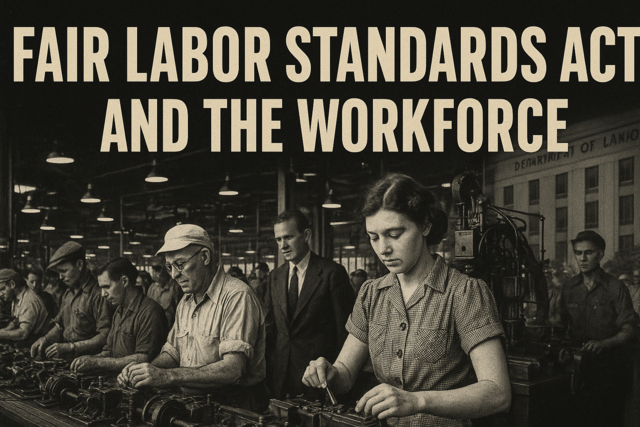The diversity in today's workplace means we must be more sensitive to those other cultures, as much as people from other cultures must be sensitive to yours. However, it also means that the culture of the workplace has changed. We'll examine what that means to you and your organization in this article.
The Definition of Culture
As with a lot of words in the English language, the word culture has several definitions. In everyday life outside of the workplace, culture might have just one meaning. You may refer to the Muslim culture, the Mexican culture, and et cetera, and in those cases it would have either the first or second meaning listed above.
However, in the workplace, all the definitions of culture apply. In essence, when in the workplace, we are blending the cultures of every individual and group to form the culture of the organization � and even the teams within the organization. How the individuals and their individual cultures blend and come together will determine the culture of the workplace. The culture of the workplace will affect your success, as well as everyone else in your organization.
Measuring Your Cultural Competence
Cultural competency refers to your ability to interact with people from different cultures, as well as social and economic backgrounds. It measures your ability to effectively work with people who don't share your native language, who celebrate different holidays than you, who may not share the same beliefs, principles, or lifestyle as you. In today's workplace, being culturally competent is critical not only to your success, but to the success of your organization, as well.
However, cultural competence is not something you can learn by passing a test or taking a class at work. Instead, like most diversity issues in the workplace, cultural competence requires that you examine your own thoughts and feelings, then work on developing your own cross-cultural skills needed to excel in your career and within your organization.
There are four components to cultural competency that were developed by Diversity Training University International (DTUI). These four components are: awareness, attitude, knowledge, and skills.
Let's talk about each one of the four components.
-
Awareness is your reaction to people who are different than you. If you see a person from Mexico, and automatically wonder if they are an illegal immigrant, then that is your reaction to that group of people. It's important that you're aware of how you react. If needed, you can work on changing your thoughts and reactions to create a more positive culture in your workplace.
-
Attitude. Examine any cultural biases that you have, as well as your own beliefs about cultural differences. An example is believing that Muslims are wrong and Christians are right. This attitude will affect how you work with the people from Islamic cultures.
-
Knowledge. The beliefs and values that you hold regarding equality may affect your behaviors. It's been proven that those who hold prejudices display behaviors that reveal their prejudices. Yet, someone may be unaware they're displaying those behaviors. For example, a manager must entrust the key to the stock room to an employee. Rather than giving the key to the employee who accesses the stock room most often -- the African-American -- he gives the key to another employee, who is Caucasian, instead.
-
Skills. This component requires working on, and perfecting, your cultural competence. Communication is the most critical skill you can have in the workplace, since this is the main way you interact with your colleagues, employees, or co-workers. It includes verbal and non-verbal communication, and knowing how these tend to vary from culture to culture.
Take the time to reflect on your awareness, attitude, and knowledge. Don't be afraid to be honest with yourself, and don't feel badly for any biases or prejudices you may harbor. We're human. Prejudices and biases are instilled in us based on our background and experiences. What is important is acknowledging them, so they can be overcome.
Identifying Your Cultural Baggage
Perhaps before you can become culturally competent, you must first identify your cultural baggage. Your cultural baggage is like a suitcase that contains all your beliefs, values, biases, prejudices, and � in some cases � even your habits. It makes up a big part of who you are, how you work, and what you feel comfortable with, as well as what you don't.
Listen, we all have our own cultures. You might have grown up in a household where your family's culture was celebrated. An example is a family who has Native American ancestors and attends events on a reservation a few times a year. That is part of your culture, and it influences who you are and what you believe. Another example might be growing up in the deep South, where it's a different culture than in the north. If you moved north, there's no doubt that your culture would be different than most of your co-workers.
It's your cultural baggage that can make you feel uncomfortable, frustrated, and even fearful when exposed to a culture that's foreign to you. That's a very important thing to realize. In fact, realizing that is a big part of taking away what you need to from this course. Because of that, let's say it again: It's your cultural baggage that can make you feel uncomfortable, frustrated, and even fearful when exposed to a culture that's foreign to you.
-
This means that when you feel uncomfortable around a person or group that is different from you, it is not them that is making you feel that way. It's your own cultural baggage.
-
This means if you see a person from a different culture and you feel fear or instant distrust, it's not their culture that's making you feel that way. It's yours.
-
This means if you get frustrated because of a language barrier or other cultural difference, it's not THEIR differences that are making you frustrated. It's your cultural baggage making you feel that way. And remember, your cultural baggage can include your background, but also your biases and prejudices.
To become culturally competent, it's critical that you become aware of your own cultural baggage, and unpack the "items" that are holding you back from the skills you need in a diverse workplace.
To do this, you must become aware of some aspects of your own culture. Ask yourself these questions as a starting point:
-
Does a friend touching you while talking to you make you uncomfortable (such as touching your arm)? What about a colleague? Spouse? An acquaintance? What defines too much touching for you?
-
Do you get straight to the point when you talk to someone, or do you take the long way around to get where you want to go?
-
How close do you stand to someone when you talk? Do you stand closer if it's a friend? How about a stranger?
-
When someone asks you to be somewhere at 2 p.m., do you get there at 2 p.m.? Ten minutes early? A half hour late? Does this apply to work meetings, as well?
-
Do you prefer constant eye contact when communicating with someone? How much is too little? Or too much?
-
Do you make gestures with your hands when you speak? Do you do this constantly? Only when you're excited or anxious?
Of course, the answers to some of these questions may relate to your individuality and/or personality. However, all are related to your culture. You can probably think back to a parent or grandparent who was much like you, and who would have answered the same way as you. We are all a product of our culture.
Understanding Different Communication Styles
Different people from different cultures use different communication styles. You may be the type of person who gets right to the point. However, a colleague may take a more circular approach and take longer to say what needs to be said. Understanding the different communication styles and how culture influences them will help to ease frustration and promote understanding, not just for you, but for your colleagues, as well.
There are five communication styles that cover most cultures in the world. They are:
Linear versus circular. Linear discussions get straight to the point. Circular discussions involve telling stories around the main point.
Direct versus indirect. In direct communication, statements are made directly to the people involved. In indirect communication, communication is made through suggestion, implication, and other cues, and may be made within earshot or through a third party. This is to avoid confrontation.
Detached versus attached. Attached communication is made with feeling and emotion; whereas, detached communication favors objectivity.
Concrete versus abstract. Concrete communication assumes that issues will be better understood using stories, allegories, and examples. It focuses on the specific. Abstract, on the other hand, uses theories, principles, and data. It focuses on the general.
Intellectual engagement versus relational engagement. Intellectual engagement means that a disagreement is directly stated. It's assumed that the idea behind the disagreement is under attack, but not the relationship between those involved in the communication. This is common in some European countries. Relational engagement involves being respectful of feelings and ideas. In other words, tread softly.
Americans tend to be linear, direct, detached, intellectually engaged, and concrete. However, a lot of African, Pacific, and Asian cultures prefer circular, indirect, attached, and relationally engaged. In France, the style is typically abstract, intellectually engaged, and detached. In Spain and Latin America, it can be direct, linear, abstract, and relationally engaged.
Of course, this can differ in other countries, regions, and cultures. Being aware of different communication styles, though, is the start to understanding and becoming more sensitive when someone communicates using a different style than you.
Essential Cross-Cultural Skills for the Workplace
Developing the skills and ability to understand and communicate effectively with all your employees or co-workers is critical to your success in your own career, as well as the success of your organization. Diversity in the workplace isn't going to go away or decrease. In fact, it's going to increase as diversity in this country continues to increase.
There are endless cultural variations that will determine people's beliefs, values, work ethic, and even their work schedule. It's impossible for you to learn every culture in the world and gain the skills and knowledge to understand each and every culture. Nobody expects you to do that. Instead, developing cultural competence means gaining an awareness and basic knowledge of cultural differences and how those differences affect people's beliefs, values, work ethic, and work schedule, so you can be more understanding and sensitive to them.
Below are some skills you need to be cultural competent in the workplace:
Team building. The U.S. has an individualistic culture where individual achievement is preferred. People want to do things on their own. However, there are other cultures that value teams and cooperation. When you want to go it alone at work, this can be problematic if you have someone always wanting to work together to achieve success. It can also be a great asset when building teams within the workplace.
Communication. Different communication styles will affect how people interact and handle problems. Someone from an Asian culture may be hesitant to give bad news, but someone else from different culture may exaggerate it. Learn to recognize different communication styles.
Time. Different cultures have different views on time, such as the balance between work and family, and work and socializing. They can also differ on the meaning of "late."
Calendars and holidays. The U.S. goes by the western secular year that begins with January 1st. It also primarily celebrates Christian holidays. It's helpful, especially if you're in a position where you schedule meetings, events, work days, etc., to have a cultural calendar so you're aware of the different holidays for different cultures. You can obtain cultural calendars for free online.
Working Through the Language Barrier
Have you ever tried to learn a foreign language? Perhaps you took Spanish for a few years in high school, then college. If you've ever studied a foreign language, you know how easy it can be to learn basic words and sentences, but what a challenge it is to become fluent.
In today's workplace, it's likely that some of your employees and co-workers are from different continents or countries, and they are still working toward being fluent in English. In the meantime, it's important that everyone learns techniques to work through any existing language barriers for the greater good of the task at hand, as well as the organization.
When communicating with someone who isn't fluent in English, make sure you adjust your English to fit the person who's listening. You want them to be able to comprehend what you say, so make sure you use words and phrases they will understand. This means refraining from using slang, jargon, or buzz words. Speak a little slower. We Americans tend to talk fast. Make sure you clearly pronounce every word. You can also use visual aids, such as pictures, charts, and graphs, to communicate what you are trying to say.
While it can be frustrating for you to slow down to communicate with someone who isn't a native English speaker, it can also be beneficial. You'll find that the level of respect for you, from everyone in the organization, will increase because of your effective communication abilities. It could even mean bigger and better opportunities for you.































